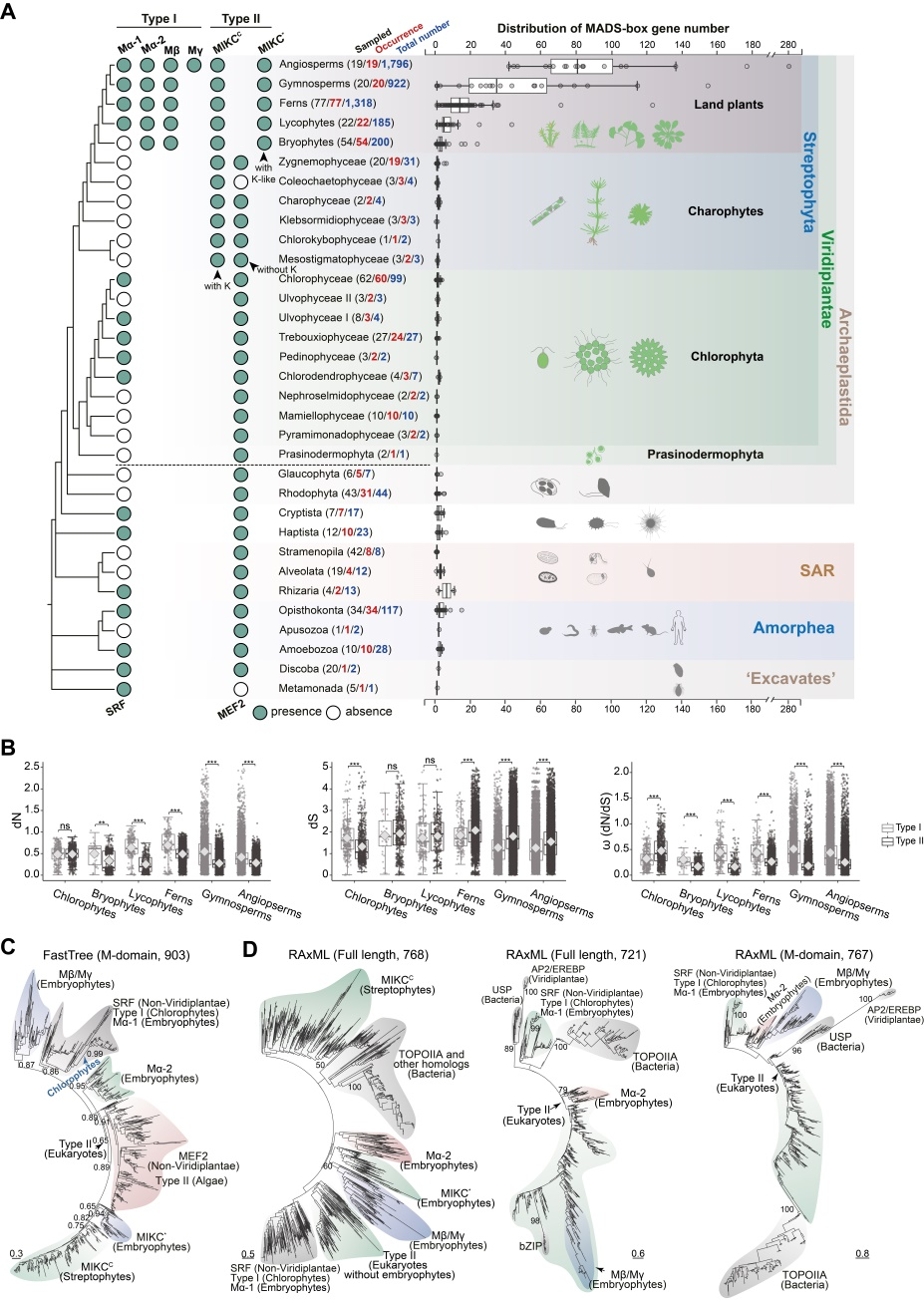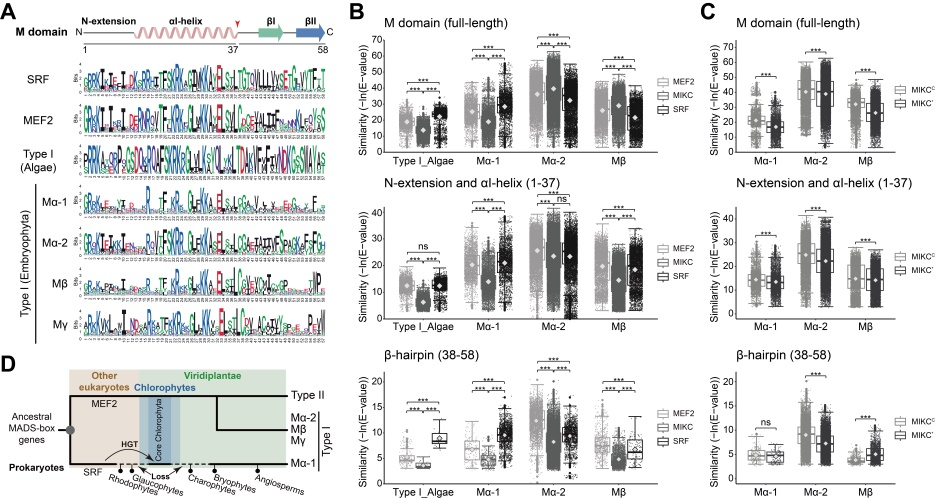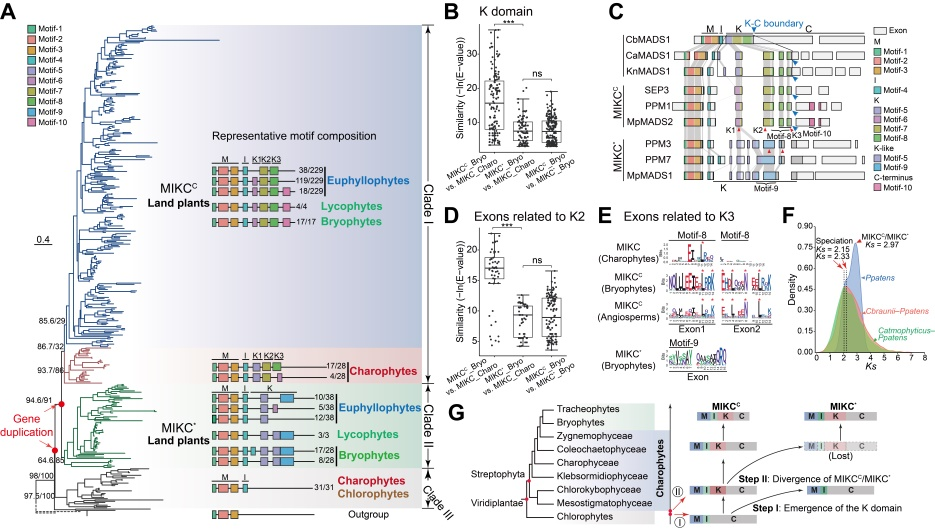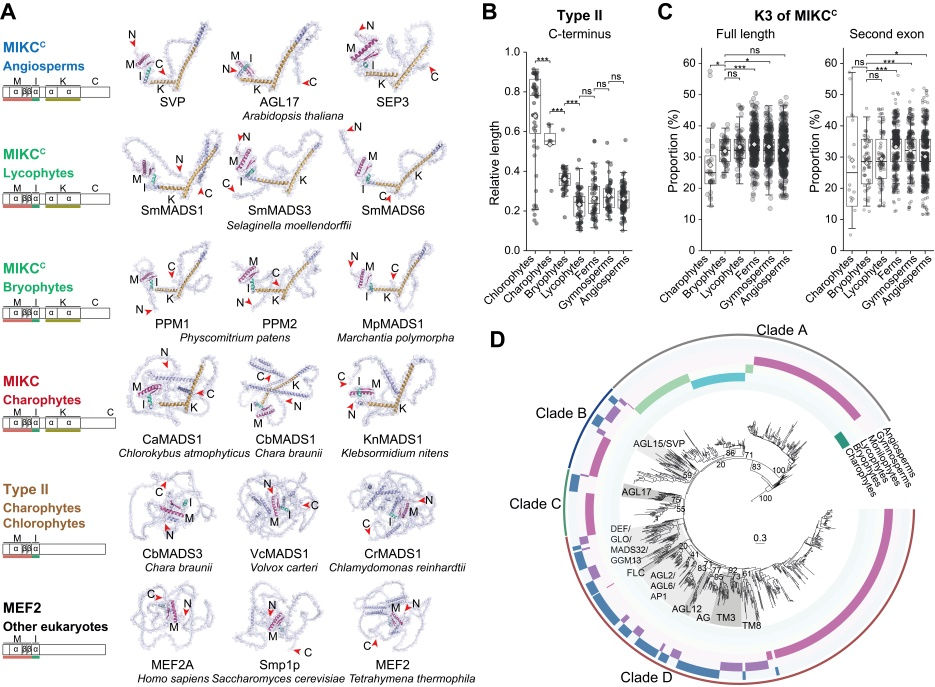MADS-box genes, critical regulatory elements in eukaryotes, have undergone extensive diversification in green plants. Although MADS-box genes have been extensively studied, the understanding of their origin and evolution, particularly the relationships between different gene types and their functional diversification, remains incomplete.
To tackle this issue, researchers from the Wuhan Botanical Garden (WBG) of the Chinese Academy of Sciences have clarified key aspects of MADS-box gene evolution in green plants. By systematically analyzing genomic and transcriptomic data from 551 representative eukaryotes and integrating sequence and protein structural evidence, they reconstructed the evolutionary history of these vital genes.
Their findings were published in Plant Communications.
The team identified 4,899 MADS-box sequences across 445 species. All these genes were categorized into two major classes-type I and type II-based on their structural features and evolutionary affinities with well-characterized MADS-box genes from both animals and plants. Their findings reveal that plant type I genes have a polyphyletic origin: specifically, all type I genes derived from chlorophytes and a subset of Mα genes from land plants (hereafter designated the Mα-1 subgroup) are orthologous to Serum response factor (SRF)-type genes. In contrast, the remaining land plant Mα genes (designated the Mα-2 subgroup), alongside all land plant Mβ and Mγ genes, and all plant type II genes, are orthologous to Myocyte enhancer factor-2 (MEF2)-type genes.
Two ancient duplication events were inferred in the stem group of extant streptophytes. The first event split type II genes into two distinct clades; this was followed by a second duplication, which generated the two ancestral MIKC gene lineages that ultimately gave rise to MIKCC and MIKC* genes. Notably, charophyte MIKC genes should be reclassified as MIKCC genes, as they share a closer evolutionary relationship with land plant MIKCC genes than with MIKC* genes.
Ancestral MIKCC proteins exhibited a sphere-like architecture, featuring long coils that imposed physical constraints on tetramerization. In land plants, the architecture of MIKCC proteins has undergone substantial evolutionary changes-most notably, a significant shortening of their C-termini. This truncation exposes key domains fully, a structural prerequisite for tetramer formation. Additionally, the K3 subdomain of MIKCC proteins (particularly in ferns) shows an enrichment of hydrophobic residues, which points to a potential evolutionary adaptation linked to the diversification of MIKCC oligomerization in land plants.
Phylogenetic analyses further revealed that four major MIKCC gene clades had already been established in the common ancestor of ferns and seed plants. These clades likely serve as the raw genetic foundation for the functional diversity of MIKCC genes in seed plants.
Collectively, these findings clarify three critical aspects of MIKCC gene evolution: they elucidate the polyphyletic origin of plant type I genes, document an early duplication event in the stem group of streptophytes that gave rise to MIKCC and MIKC* genes, and outline the stepwise evolutionary processes underpinning the functional diversification of MIKCC genes in seed plants.
This study was supported by the National Natural Science Foundation of China and the Sino-Africa Joint Research Center.

The presence and phylogenetic relationships of MADS-box genes in eukaryotes. (Image by WBG)

Polyphyletic origin of type I genes in green plants. (Image by WBG)

Early evolution of type II genes in land plants. (Image by WBG)

The stepwise evolution of MIKCC genes in land plants. (Image by WBG)






